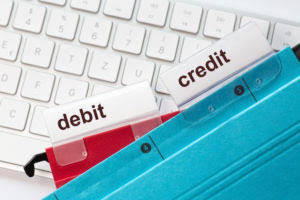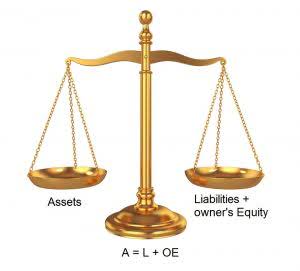30 Dec How to Create the Perfect Invoice for Artists
Content

Whatever services you are billing your clients for, using a single form of billing will make life simpler. Connecting your invoices to a payment system and bank account will help you keep track of paid and unpaid bills easily.

Each task on a separate line, such as “Logo Design” & add the quantity or the no. of hours, & the total cost for each task. As you would rightly expect by looking at the artist invoice template, the word “invoice” has to appear in this document. Label the document clearly and boldly, so clients have no doubt what it is. Number them to make it easier to follow up late payment or non-payment with your clients.
QUOTE, SCHEDULE, INVOICE, AND GET PAID—FASTER!
An invoice is a document that details the financial components of a business transaction. Choose a profession to generate an invoice with relevant sample items.

With a range of gorgeous, tailored invoice designs, you can select your own and be inspired by our invoice template ideas to get the most out of your work. If you are creating commissioned artwork, you should have agreed upon invoicing and pay-by dates in your contract. A digital payment option integrated into an invoice is a win-win. Your buyer will be able to pay with a click of a button, and you will be compensated quickly for your art. Clients remember positive experiences like the ease of completing a transaction in moments. The Invoicing feature allows a buyer to pay directly through an invoice. Within Artwork Archive invoices, a buyer can click and pay through their Paypal account or by credit card.
Want More Helpful Articles About Running a Business?
Knowing how much to charge for your work is a complicated area. We want to help freelancers, so we’re going to give you some general tips here about settling on the best amount to charge clients for your services. The US Dept of Labour estimates fine artists earn $25 per hour for their work. Pricing your art work, either as individual pieces https://wave-accounting.net/ or for a project, can be challenging. Artist skill is an important factor, but so is your market. Smaller markets may not support higher fees, while a larger art market, such as New York or Los Angeles, might allow artists to earn higher rates. Milestone billing is useful for larger projects that will take place over several weeks or months.
- Bonsai’s invoice templates can help you send professional looking payment requests in an instant.
- Find a way of showing your appreciation for the orders or work your clients brought to you.
- For a collector, an invoice helps establish an artwork’s value, will help insure that work, and create a trail of that work’s history and provenance.
- It proves that you were actively involved in your trade for some time.
- An invoice usually includes the name and contact information of the client and, you, the business owner.
The item list on the invoice will include the details of the art service, such as an advance payment for commissioned art, hourly service for an ongoing project, etc. Check out the invoice templates below to find the perfect fit for your brand.
Download Artist Invoice Template Easy With Saldo Invoice
This type of invoice collects a deposit or advance before the total price is due. List the services rendered in detail and the price of each. Get the insights and strategies you need to become a successful artist. Always include the word “invoice” in the title of your document as well as the number .

This is not a must, but it gives a more professional business-like appearance to the invoice. When invoicing and otherwise, it’s important to be in contact with your clients. Even if it’s as simple How To Create The Perfect Invoice For Artists as a templated reach-out, your collectors want to hear from you. It’s about your art invoice but it’s also about what comes with it—the details you include and any extra documentation.
What your invoice should include
You can say something like, “I’m so happy you fell in love with “Artwork ABC,” I am preparing it for shipping now. I will send you another message with a Certificate of Authenticity and your invoice this Wednesday. Once your invoice is paid, I will send you a shipping notification.” While it may seem like an invoice is all about you as the artist, it isn’t.
- The automated system does all the work of calculating invoicing for you, reducing errors, and keeping perfect accuracy.
- Provide the cost based on how you’re billing the client and the total price for each section of the project.
- Your best rates will be different, because everyone’s market is different.
- As well as making the billing process run more smoothly.
- Your invoice reflects your business and should look fantastic yet be easy for you to fill out when needed and provide to your clients.
- Always include the word “invoice” in the title of your document as well as the number .
Knowing how to write an invoice with clear line items is crucial. An easily understandable invoice helps your client pay right away without asking questions that may delay the billing and invoicing process.
You may either send your invoice immediately or schedule it for later. If you are unsure when you will finish a job, you may always keep your invoices as drafts. Will my clients see “FreeInvoiceBuilder” on the invoice? You can easily drag or select your logo to the top left corner of the invoice template and brand your invoices seamlessly.Can I choose between different currency options? Send the created PDF design & creative invoice electronically or print it. You can also share the link to your design invoice so your client can download or print the invoice directly. All formats are right, as long as they contain every detail that should be in an invoice.
How do you ask clients for money?
- Introduce yourself and explain why you're calling.
- Be clear, concise, polite, and short.
- Don't use slang words and expressions.
- Don't make direct accusations about the client not paying you.
- Maintain an impersonal and polite tone that gives your client the benefit of the doubt.



